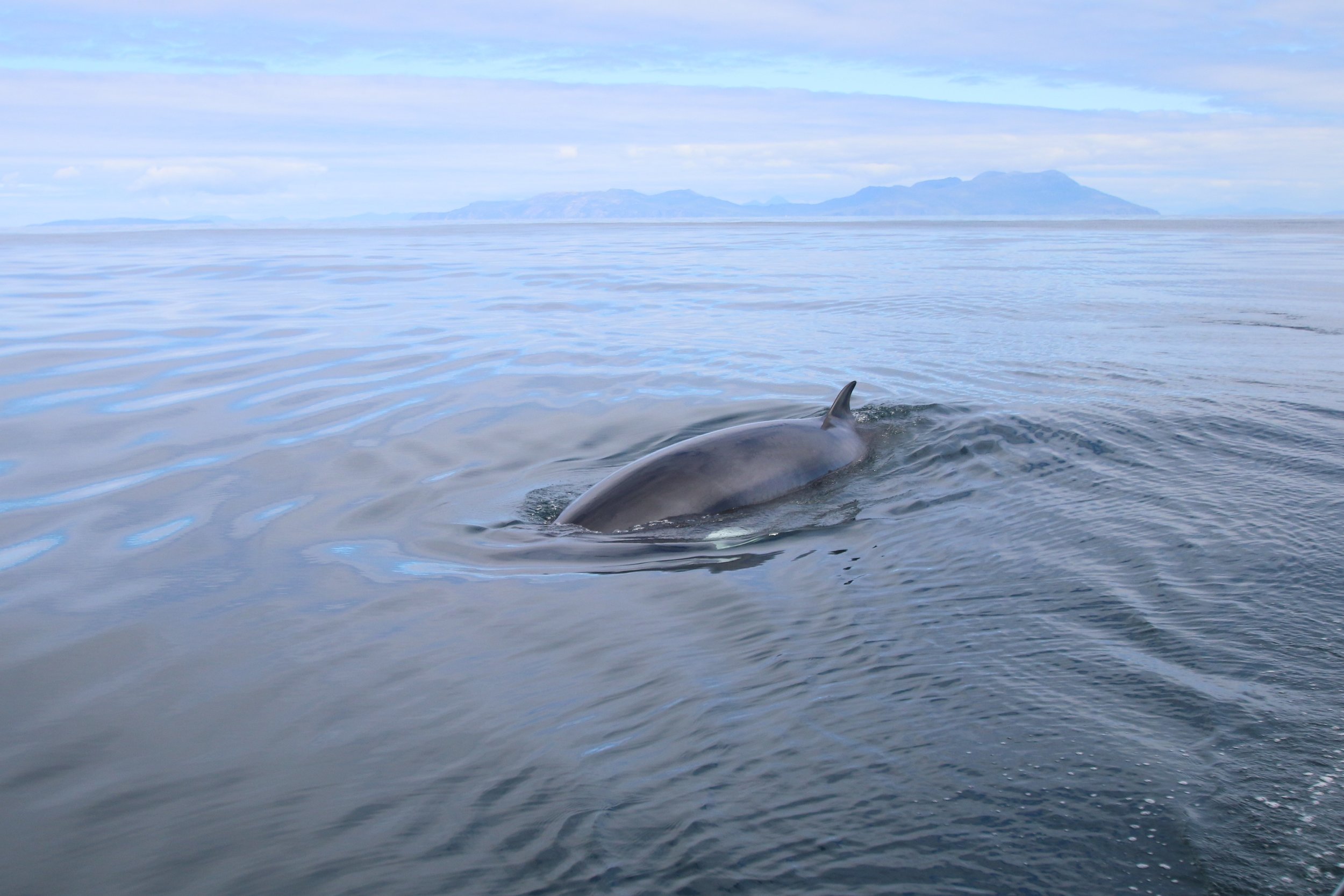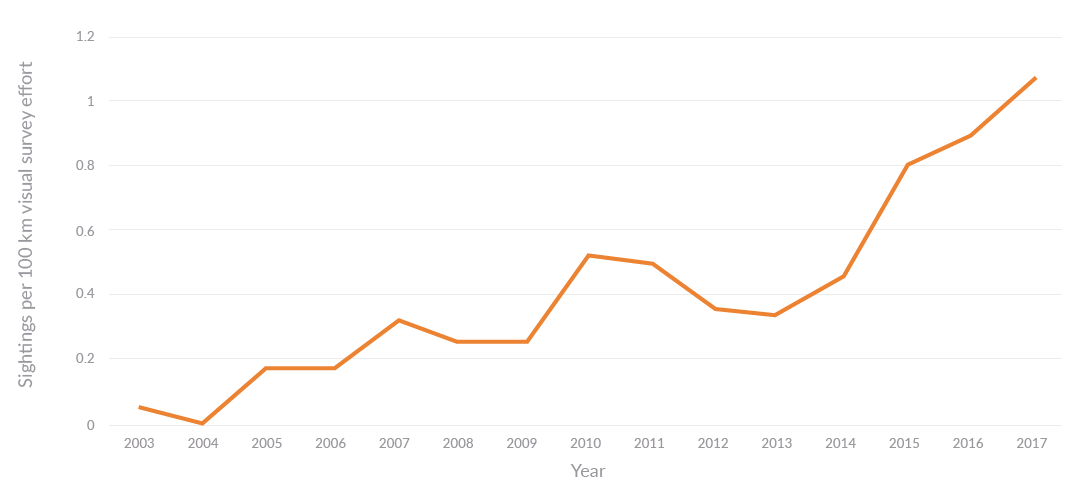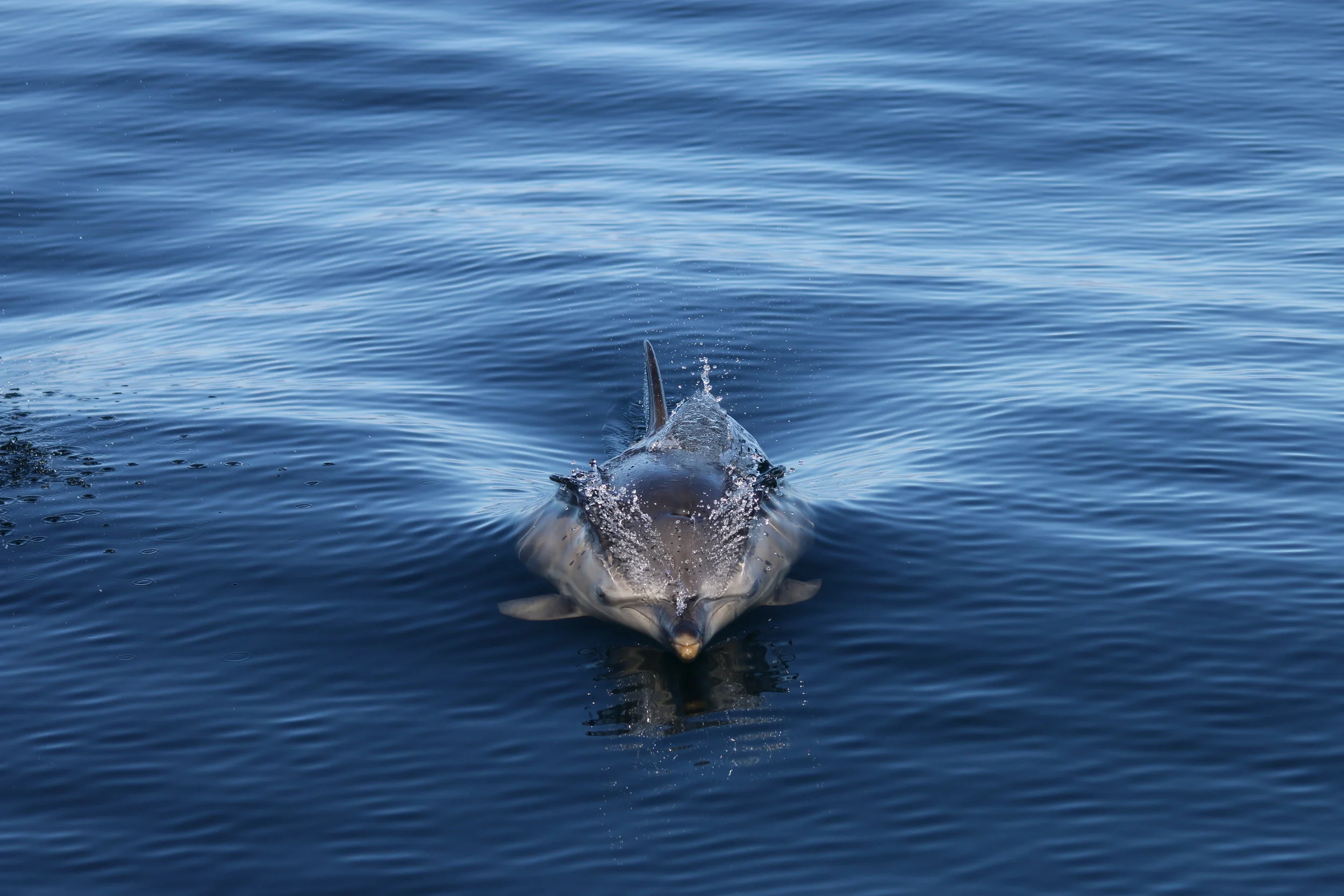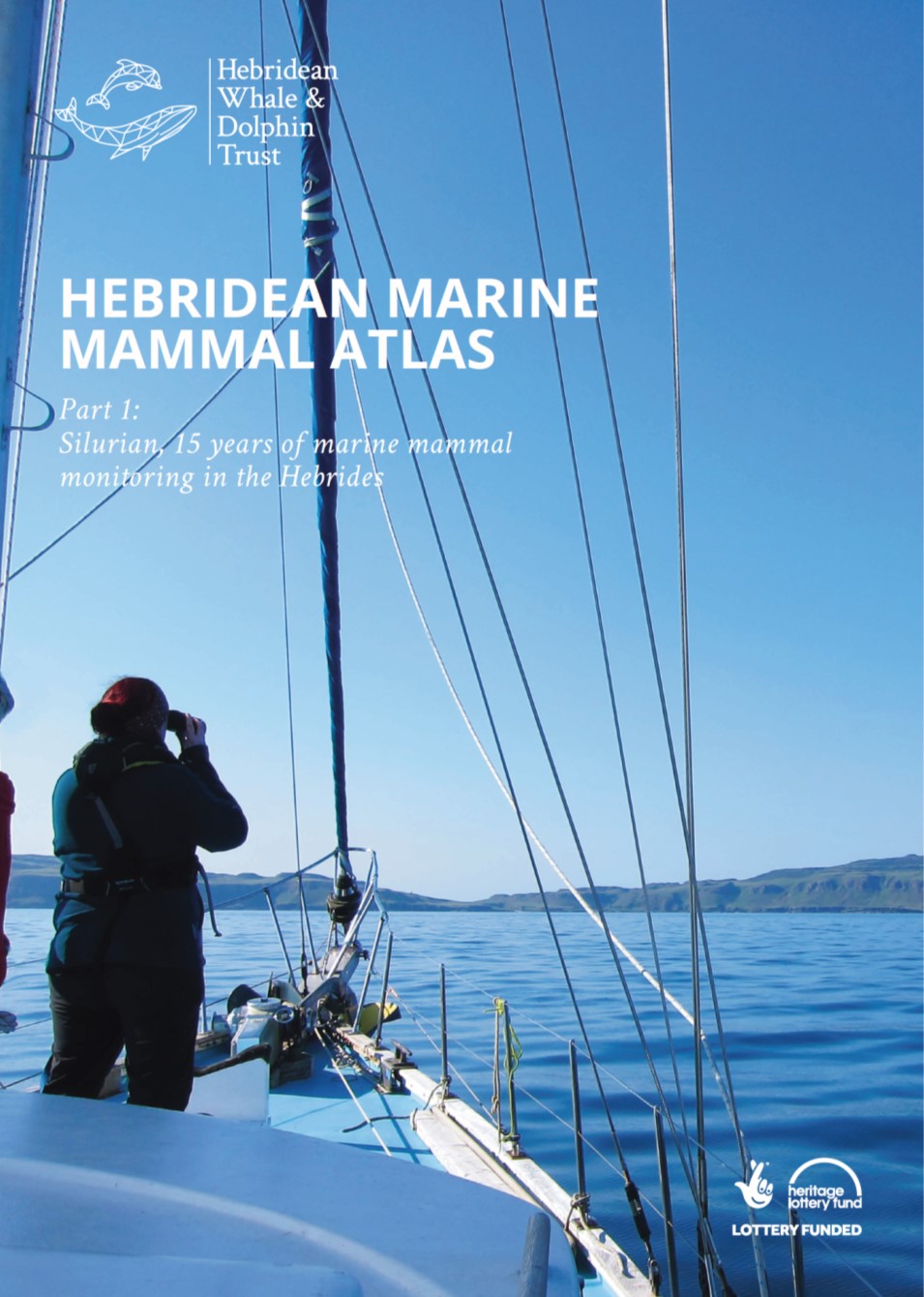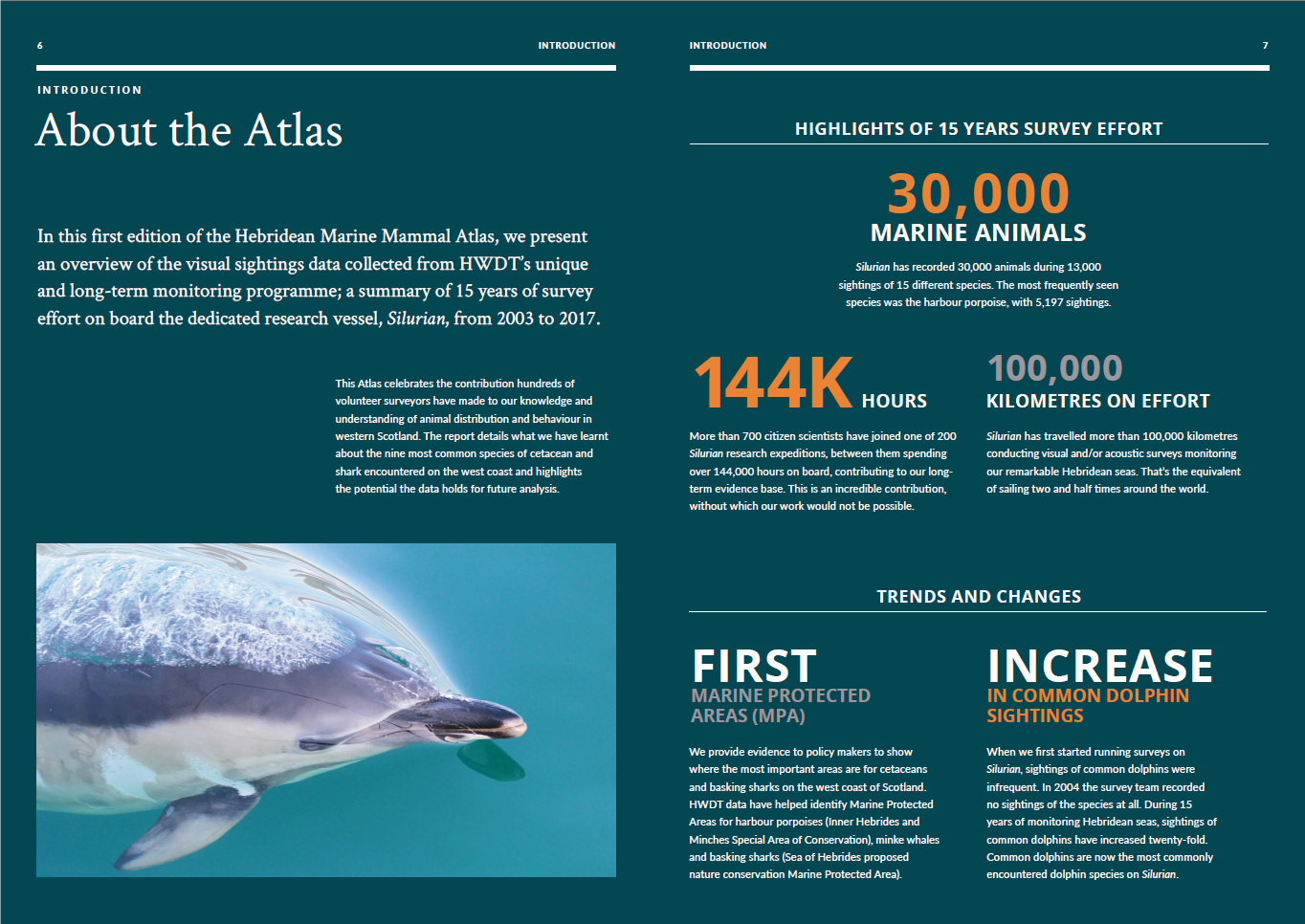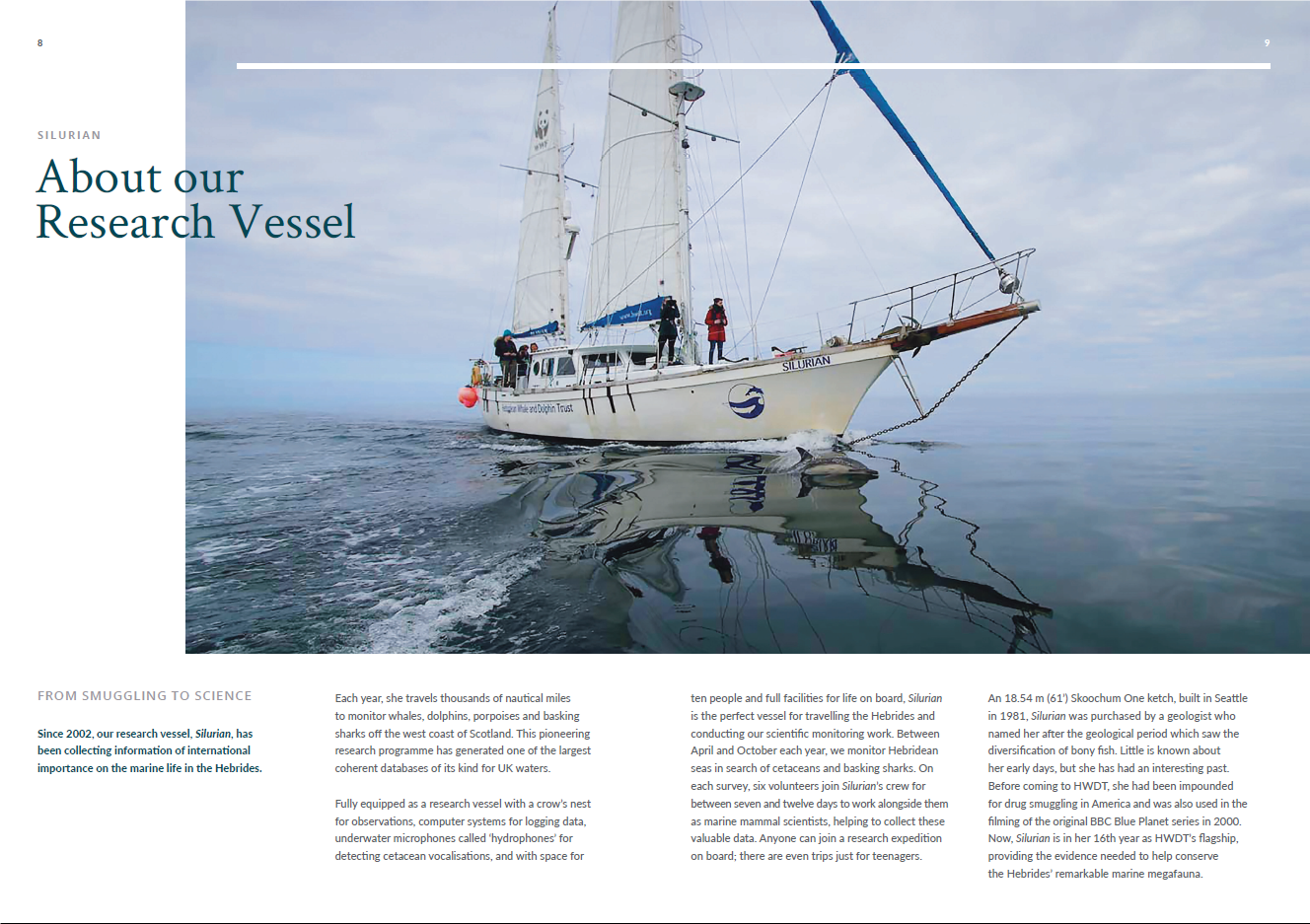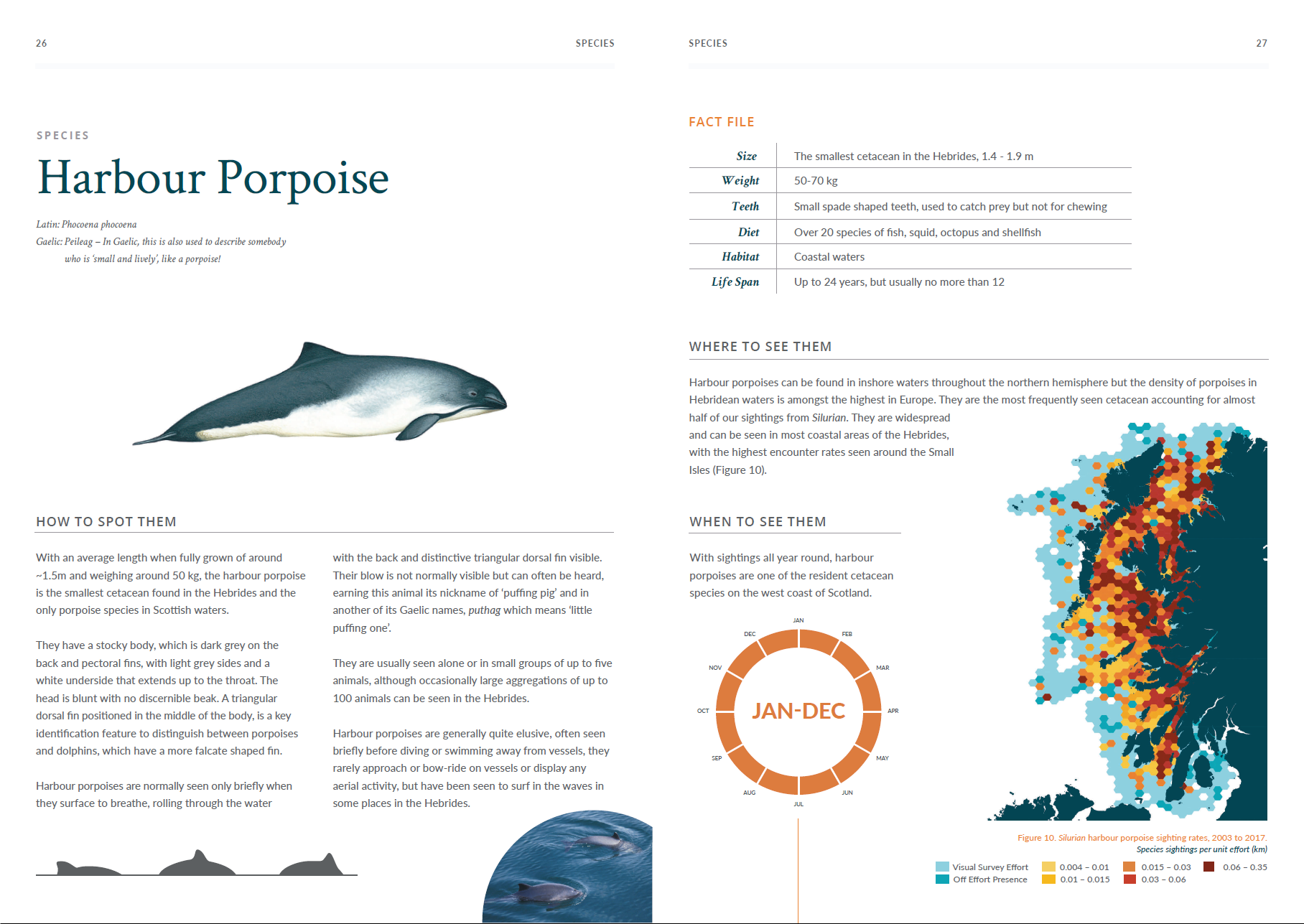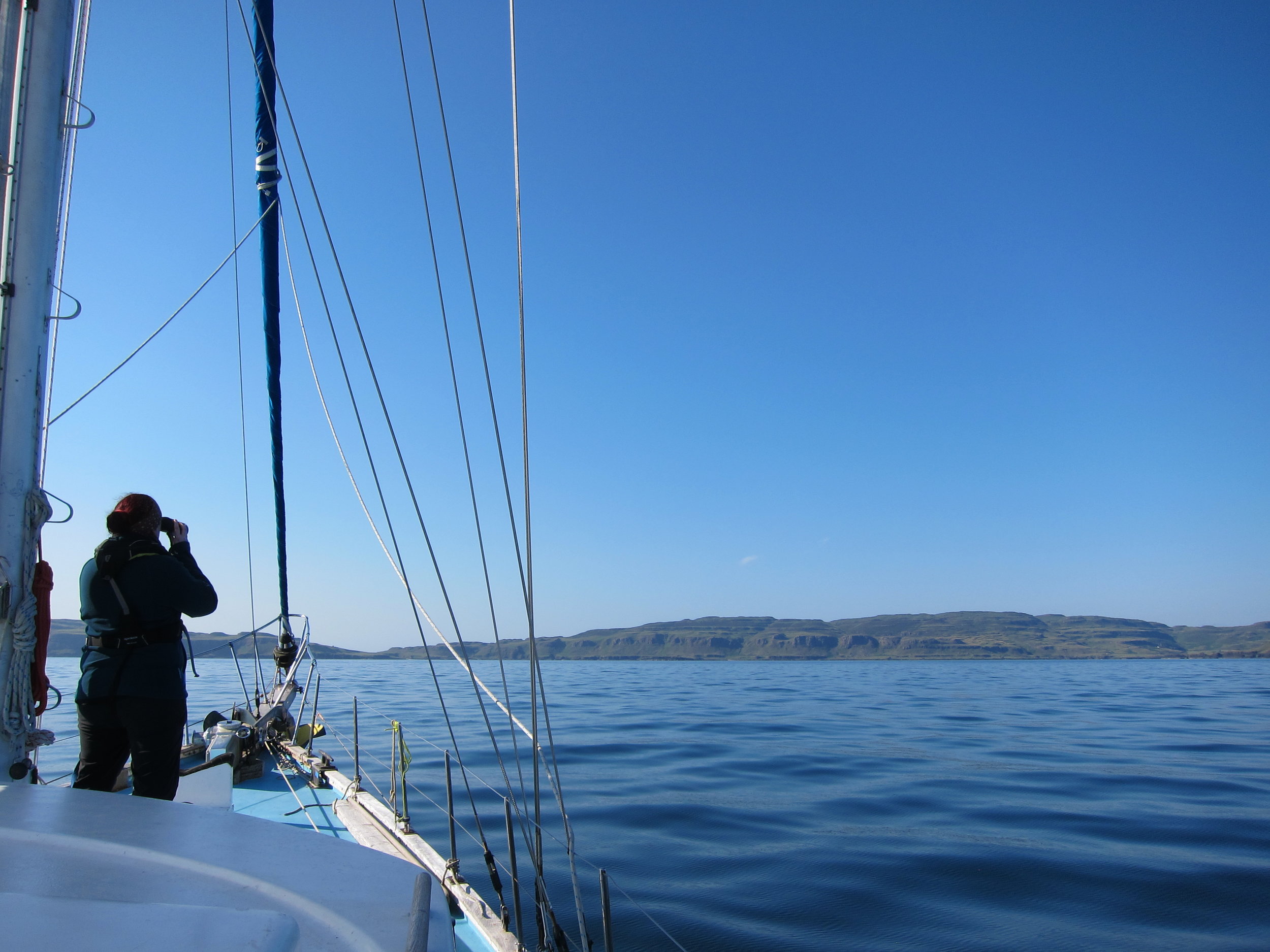
More than a quarter of the world’s whale, dolphin and porpoise species have been recorded in Hebridean seas, making this an area of global importance for cetaceans.
Twenty-three species of cetacean have been recorded in Hebridean waters. Some of these species live here all year round, some migrate into our waters year after year, and others are rare and elusive visitors. It isn’t just an important area for cetaceans, but for basking sharks and other marine megafauna too.
For the past 15 years, HWDT have been monitoring this important area to provide the evidence needed to develop effective conservation measures to protect Scotland’s remarkable marine wildlife for future generations. Now, for the first time, we have compiled all of this knowledge in our Hebridean Marine Mammal Atlas series.
15 years of monitoring
Since 2002, our research vessel, Silurian, has been collecting information of international importance on the marine life in the Hebrides. Each year she travels thousands of nautical miles to monitor whales, dolphins, porpoises and basking sharks off the west coast of Scotland. This pioneering research programme has generated one of the largest coherent databases of its kind for UK waters.
All of these data combined provide a unique and powerful body of knowledge, which is making a real impact for the protection of cetaceans in western Scotland, contributing to the identification and designation of Marine Protected Areas and detecting trends and changes in the marine environment.
30,000 marine animals
Silurian has recorded 30,000 animals during 13,000 sightings of 15 different species. The most frequently seen species has been the harbour porpoise, with more than 5,000 sightings.
144,000 hours
More than 700 citizen scientists have joined one of 200 Silurian research expeditions, collectively spending over 144,000 hours on board, contributing to our long-term evidence base. This is an incredible contribution, without which our work would not be possible.
100,000 KILOMETRES
Silurian has travelled more than 100,000 kilometres conducting visual and/or acoustic surveys monitoring our remarkable Hebridean seas. That’s the equivalent of sailing two and half times around the world.
Why is it important?
The same rigorous survey methodology has been used for 15 years, ensuring that the data collected are consistent and comparable between years, providing a wide scale assessment of cetacean distribution and animal behaviour. Anthropogenic parameters, such as underwater noise and marine litter, are also monitored to identify emerging threats and understand the conservation implications and risks.
detecting trends and changes
The long-term assessment of cetacean distribution that HWDT data provides is crucial because it produces a powerful and comparable data set that can be used to detect trends and changes in the marine environment. One such example is the increasing number of short-beaked common dolphins that have been observed over the past decade in the Hebrides.
Common dolphin sightings per 100 km survey effort, showing a clear increase over time.
Identifying important areas
We provide evidence to policy makers to show where the most important areas are for cetaceans and basking sharks on the west coast of Scotland. HWDT data has helped to identify Marine Protected Areas for harbour porpoise (Inner Hebrides and the Minches Special Area of Conservation), minke whales and basking sharks (Sea of Hebrides proposed nature conservation MPA).
more about the atlas series
The Hebridean Marine Mammal Atlas is a series of publications that aim to celebrate the contribution hundreds of volunteers have made to the trust and showcase what we have learnt from the data that has been diligently collected.
In the first edition, we present an overview of the visual sightings data collected from HWDT’s unique and long-term monitoring programme; a summary of 15 years of survey effort on board Silurian from 2003 to 2017. This Atlas celebrates the contribution hundreds of volunteer surveyors have made to our knowledge and understanding of animal distribution and behaviour in Scotland. The report outlines how we collect these vital data, how it has been used and the potential the data holds for future analysis. Species profiles for the nine most common species of cetacean and shark encountered on the west coast show how and when to see these species, as well as what we have learnt from our research and an overview of the threats they face.
Get Your Copy Now
To read more about what we have learnt from 15 years of monitoring on the west coast of Scotland, download Part 1 in the Hebridean Marine Mammal Atlas series for free below.
Working with others is important to us, because it helps us to build a long-term picture of UK cetacean populations. We provide data to research projects that align with our conservation and organisational values. If you would like to collaborate on a research project with us or would like to find out about data available, please get in touch with our Science and Policy Manager, Dr Lauren Hartny-Mills.
We would like to thank every single person that has contributed to our vital monitoring and research over the years.
This is a Heritage Lottery Funded publication.





